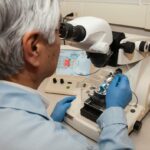The Theory of Evolution, a cornerstone of modern biology, is a scientific explanation that elucidates the diversity of life on Earth. This theory, initially proposed by Charles Darwin in the 19th century, posits that all species have evolved over time from common ancestors through a process called natural selection. The robustness of any scientific theory, including evolution, relies heavily on the weight of evidence supporting it. This article will delve into the strongest evidence supporting the theory of evolution, offering a comprehensive examination of this fascinating subject.
Fossil Records: The Backbone of Evolutionary Evidence
Fossil records provide compelling evidence of evolution. These preserved remains or traces of organisms from the past offer a window into the history of life on Earth. The consistency of the sequence of fossils in geological strata across the world is a powerful testament to evolution. For instance, no mammal fossils have been found in Devonian strata, which predates the emergence of mammals, thus reinforcing the timeline of evolution. Similarly, the absence of human and dinosaur fossils in the same strata refutes the notion of their coexistence, further strengthening the credibility of evolutionary theory.
Comparative Anatomy: Anatomical Similarities and Differences
Comparative anatomy provides another layer of evidence for evolution. Homologous structures, or anatomical features with a common evolutionary origin, indicate a shared ancestry among different species. For example, the similar bone structures in the human hand, the wing of a bat, and the flipper of a whale all point to a common mammalian ancestor.
Vestigial structures, or anatomical features that have lost their original function through evolution, also offer evidence of evolutionary history. The human appendix, for instance, is believed to be a vestigial structure from our herbivorous ancestors.
Lastly, convergent evolution results in anatomical similarities in unrelated species, demonstrating how similar environmental pressures can lead to similar adaptations, further validating the theory of evolution.
Genetic Evidence: The Blueprint of Life
Genetic evidence is perhaps the most direct and powerful evidence for evolution. DNA sequencing has revealed remarkable genetic similarities among vastly different species, indicating a common ancestry. Evolutionary trees, or phylogenetic trees, trace this genetic lineage, providing a visual representation of the relationships among species.
The comparison of human and chimpanzee DNA offers a striking case study. Despite the obvious differences, humans and chimpanzees share about 98.7% of their DNA, strongly suggesting a recent common ancestor.
Biogeography: The Geographic Distribution of Species
Biogeography, the study of the geographic distribution of species, also supports the theory of evolution. The theory of continental drift, for instance, explains why we find similar species on different continents that were once connected.
Island biogeography offers unique insights into evolutionary patterns. The diverse species of finches on the Galapagos Islands, each adapted to a specific type of food source, provide a classic example of how geographic isolation can lead to the evolution of new species.
Direct Observations of Evolutionary Change
Direct observations of evolutionary change, although rare due to the slow pace of evolution, offer undeniable evidence. Bacterial resistance to antibiotics is a prime example of evolution in action, where bacteria evolve resistance to drugs, demonstrating natural selection at work.
Darwin’s finches on the Galapagos Islands also provide evidence of evolution observed in real time. Changes in beak size and shape in response to changes in food availability have been documented over several generations, illustrating the process of natural selection.
Evolutionary Developmental Biology (Evo-Devo)
Evolutionary developmental biology, or Evo-Devo, is a field of biology that compares the developmental processes of different organisms to determine their ancestral relationship. It provides strong evidence for evolution by showing how small changes in developmental genes can lead to significant changes in body shape and structure, leading to the evolution of new species.
The Role of Natural Selection in Evolution
Natural selection, the driving force behind evolution, is a process where individuals with advantageous traits are more likely to survive and reproduce. This process, over time, leads to changes in the genetic makeup of a population, resulting in evolution. The existence of natural selection, observable in nature, serves as robust evidence supporting the theory of evolution.
Conclusion
The evidence supporting the theory of evolution is vast and multifaceted, ranging from fossil records and comparative anatomy to genetic evidence and direct observations. Each piece of evidence reinforces the others, creating a compelling case for evolution. Despite the overwhelming evidence, the study of evolution is ongoing, with new discoveries continually adding to our understanding of life’s incredible diversity.
Frequently Asked Questions
What is the theory of evolution?
The theory of evolution is a scientific explanation that describes how all species have evolved over time from common ancestors through a process called natural selection.
How do fossil records support the theory of evolution?
Fossil records provide a historical record of life on Earth. The consistency of the sequence of fossils in geological strata across the world supports the timeline of evolution.
What is comparative anatomy and how does it provide evidence for evolution?
Comparative anatomy studies the similarities and differences in the anatomy of different species. It provides evidence for evolution through the study of homologous and vestigial structures, and convergent evolution.
How does genetic evidence support the theory of evolution?
Genetic evidence, such as DNA sequencing and phylogenetic trees, reveals genetic similarities among different species, indicating a common ancestry and thus supporting the theory of evolution.
What is natural selection and how does it serve as evidence for evolution?
Natural selection is a process where individuals with advantageous traits are more likely to survive and reproduce. This process, observable in nature, leads to changes in the genetic makeup of a population, resulting in evolution.
Is the study of evolution still ongoing?
Yes, the study of evolution is ongoing. Despite the robust evidence supporting the theory, new discoveries continue to add to our understanding of life’s incredible diversity.
References
- Futuyma, D. J., & Kirkpatrick, M. (2017). Evolution. Sinauer Associates is an imprint of Oxford University Press.
- Ridley, M. (2004). Evolution (3rd ed.). Blackwell Publishing.
- Carroll, S. B. (2005). Endless forms most beautiful: The new science of evo-devo and the making of the animal kingdom. WW Norton & Company.
- Darwin, C. (1859). On the origin of species by means of natural selection, or the preservation of favoured races in the struggle for life. John Murray.








